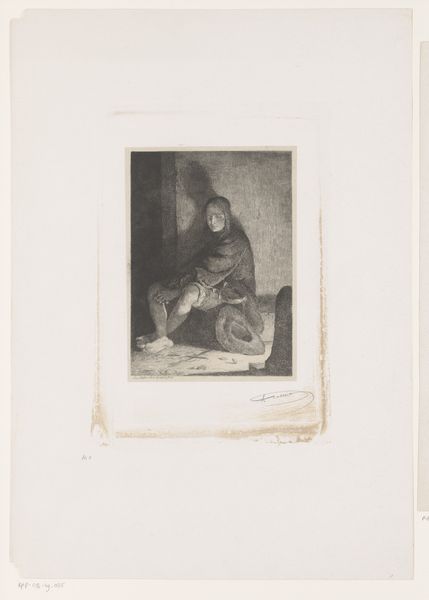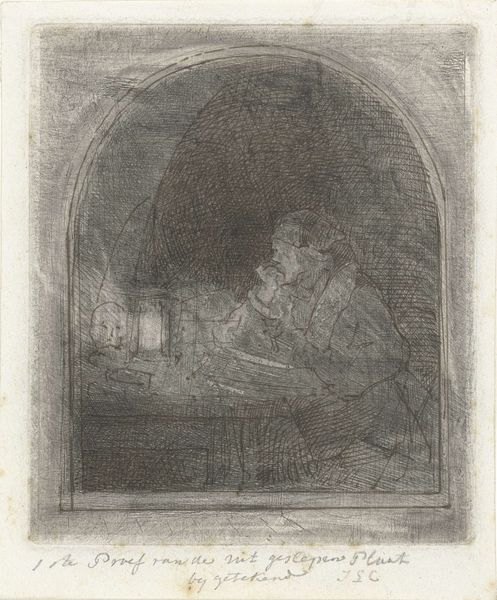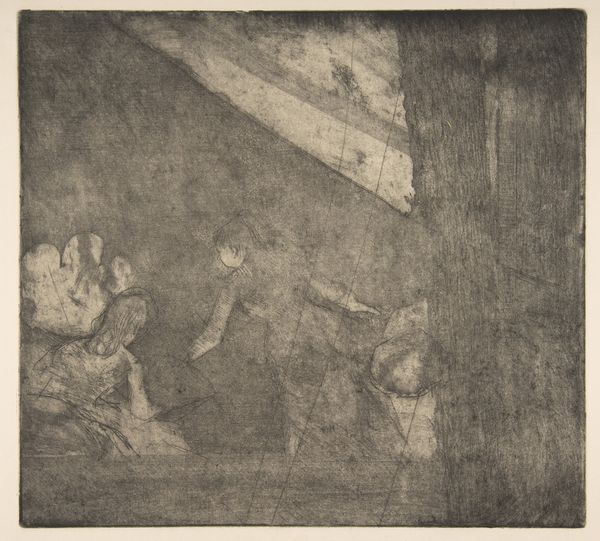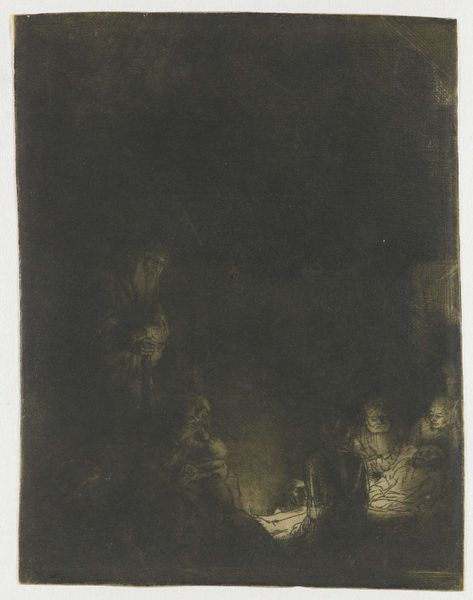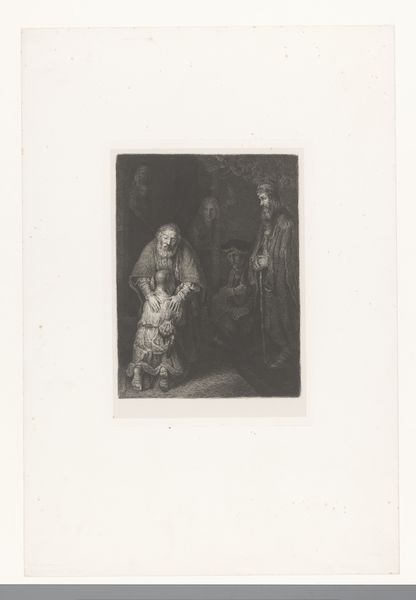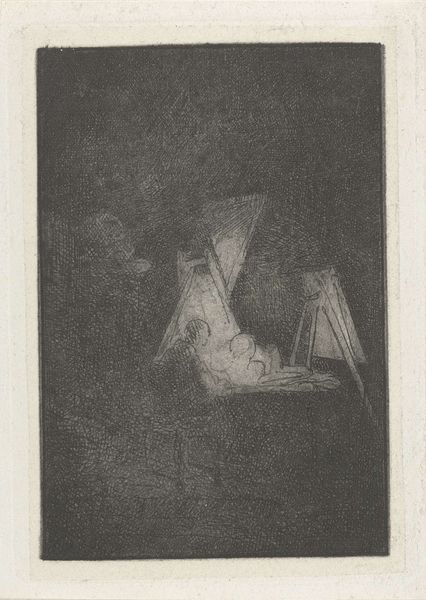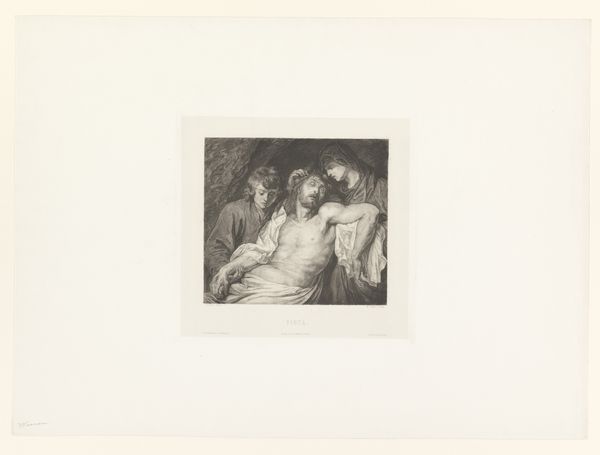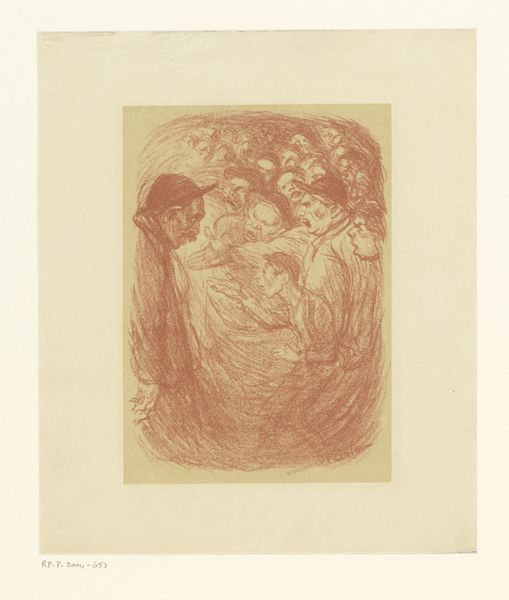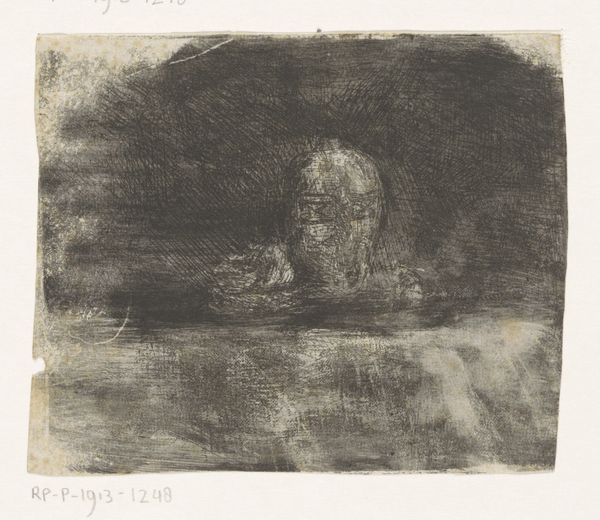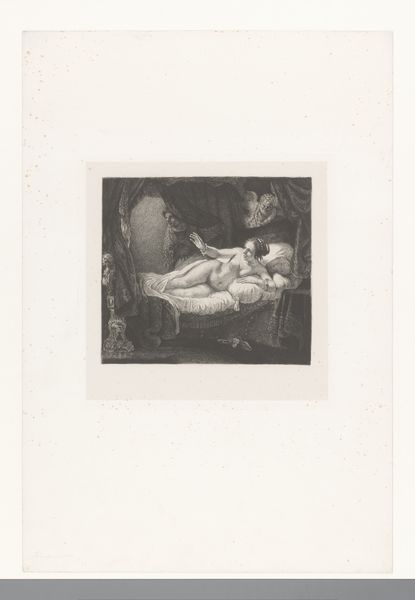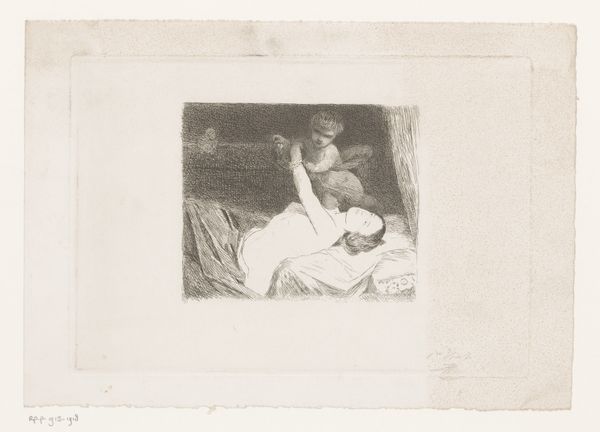
drawing, pencil
#
portrait
#
pencil drawn
#
drawing
#
neoclacissism
#
light pencil work
#
pencil sketch
#
pencil drawing
#
pencil
#
pencil work
#
genre-painting
Dimensions: height 76 mm, width 96 mm
Copyright: Rijks Museum: Open Domain
Curator: The first thing that strikes me about this piece is its vulnerability, would you agree? Editor: It does evoke that sense strongly. Formally, the tonal gradations in this pencil drawing are incredibly subtle. Look at the way de Quertenmont builds form with such delicate cross-hatching. Curator: Yes, a drawing can convey complex ideas! Andreas Bernardus de Quertenmont created "Zieke man wordt verzorgd door drie figuren", or "Sick man cared for by three figures", in 1798. Note that this pencil drawing resides here at the Rijksmuseum. Editor: De Quertenmont really maximizes the medium. The stark whiteness of the page emphasizes the man’s pallor. The artist uses very economic strokes, with the figures compressed in a tight triangular composition, yet the emotional clarity is striking. Curator: In its stark presentation of care, I read a continuity of visual language that extends back centuries. This drawing, while adhering to certain neoclassical ideals in its composition and modeling, also subtly evokes the deeply human compassion present in earlier Renaissance depictions of the Lamentation or the healing miracles of Christ. The iconography is timeless. Editor: I think you’ve made a really perceptive point. While there isn't overt Christian symbolism, this evokes sacred care and intimacy within this scene. Curator: I would argue the figures hovering around the central, pallid form are like angels, in that they create a divine atmosphere in their tending to this ailing man. Editor: Interesting. While you’re seeing allusions to religious iconography, I am most interested by the purely graphic. This is the appeal to our contemporary audience, one that looks to find beauty even when an art object reflects the reality of hardship. Curator: Well, I think we can certainly agree on the enduring power of empathy. Editor: Indeed.
Comments
No comments
Be the first to comment and join the conversation on the ultimate creative platform.

